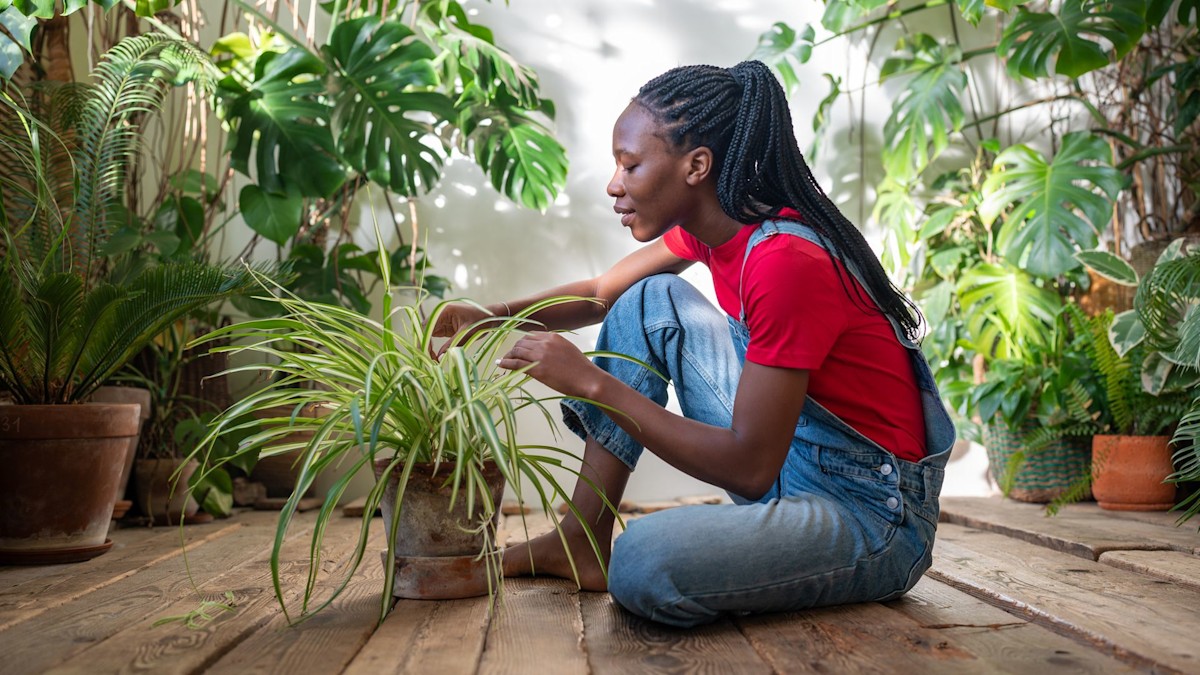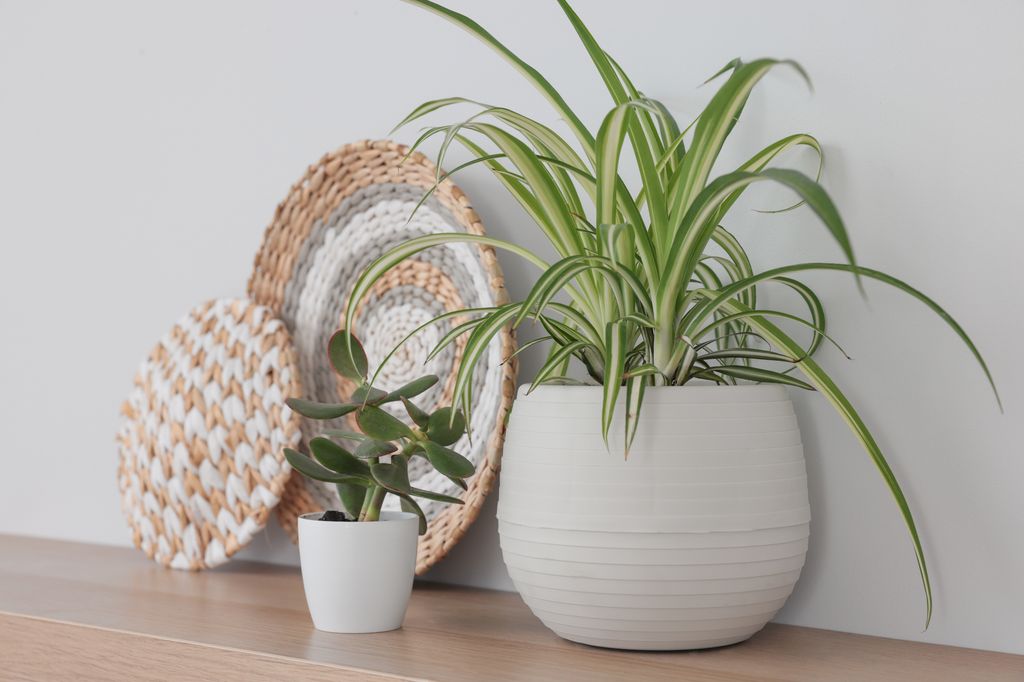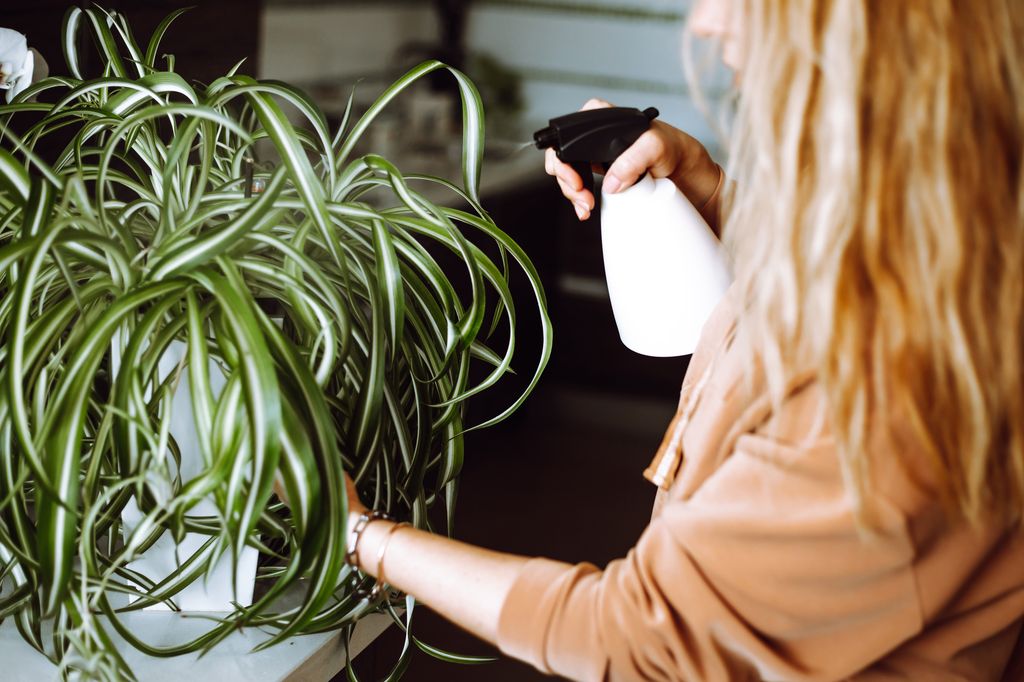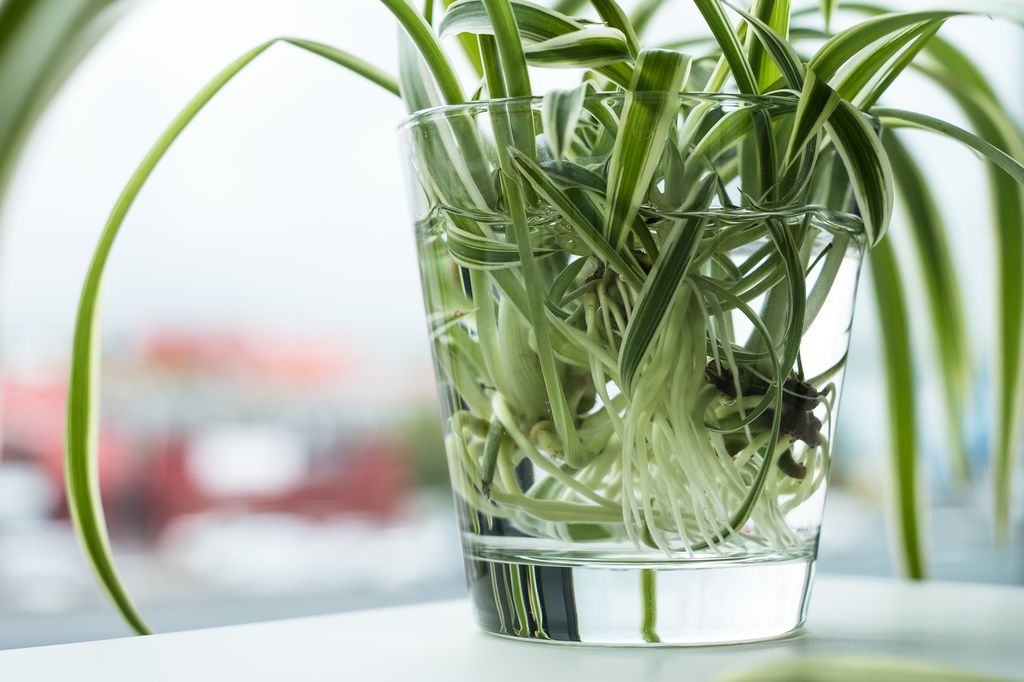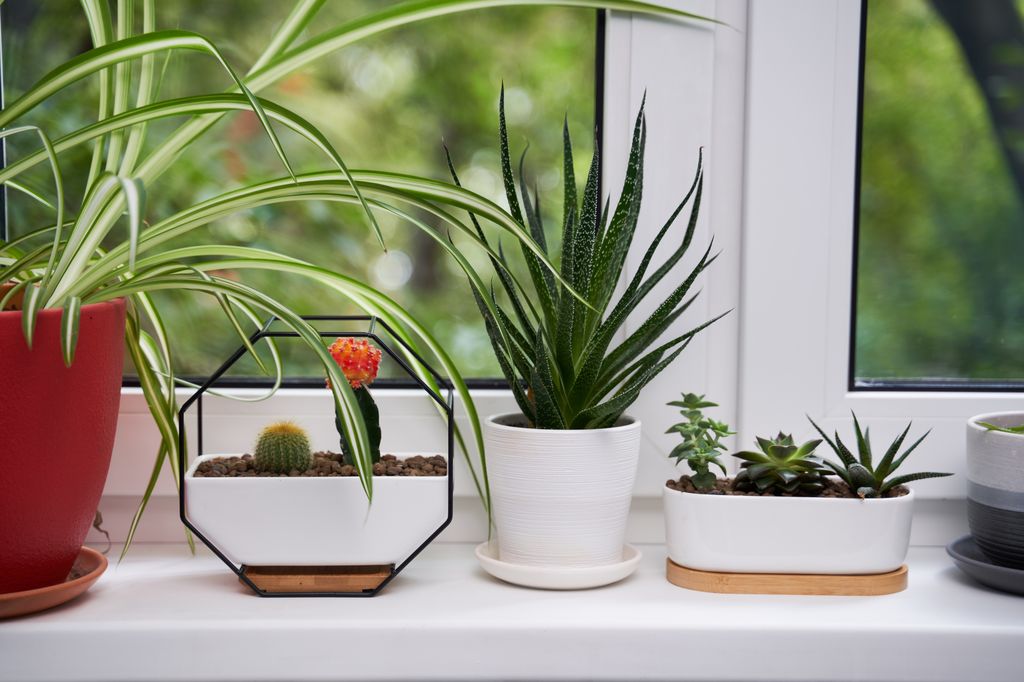Are you hoping to get started in the wonderful world of indoor plants and need a beautiful, easy-to-grow species? Well, let me introduce you to your new best friend: the spider plant. Gorgeous, resilient, and super low-maintenance, it’ll bring a garden vibe to pretty much any corner of your home. Plus, there’s a bonus: it purifies the air, too! The spider plant (Chlorophytum Comosum) has been gracing homes for as long as we can remember, so it probably looks familiar even if you’ve never had one yourself – it’s one of the most popular indoor plants around.
Is a spider plant the right choice for you?
Being popular isn’t a bad thing when it comes to plants, because that often means that people find that it’s easy to care for and decorative, too. And the spider plant truly has it all: it’s incredibly eye-catching but also perfect for beginners because its care needs are so simple. It’s also very easy to propagate with the little “baby spider” plantlets that sprout out at the end of leaves… but more on that later! Basically, if you love plants but don’t have a green thumb, this is definitely a starter plant you’ll want to consider.
The ultimate versatile plant
Growing Chlorophytum comosum at home is a sure bet, as it can handle almost anything, even those beginner’s mistakes that might lead to the immediate demise of more delicate plants. Originally from South Africa, the spider plant is super decorative thanks to its long, flat ribbon-like leaves. It’s also known for its variation in colours, with light green, white, cream or yellow details – or none at all – depending on the variety.
Because its long leaves elegantly cascade downwards, it’s perfect in a hanging planter suspended from the ceiling, but it also sits beautifully on any table or shelf.
It’s scientifically proven that an indoor spider plant helps purify the air we breathe
A guide to spider plant varieties
While similar in their appearance and foliage, and also in their care requirements, there are several varieties of the spider plant. You can tell the difference among the different types, usually because of the stripe location (either down the middle or along the margins) and the colour.
Some of the most well-known varieties that are typically grown as indoor plants are:
- Chlorophytum comosum (Green): A spider plant with solid green leaves, boasting an intense, vibrant hue.
- Chlorophytum comosum Variegatum: This variety has long, green leaves with thin white margins.
- Chlorophytum comosum Vittatum: A slow-growing variety with darker green leaves which feature a wide cream stripe down the centre.
- Chlorophytum comosum Bonnie: Arguably one of the most unique-looking spider plants, the ‘Bonnie’ leaves are curly.
- Chlorophytum laxum Zebra: A fast-growing variety featuring leaves with yellowish margins that gradually turn white over time.
Spider plant benefits: An air-purifying plant for a healthier home
Indoor plants in general have some great benefits, including transforming carbon dioxide into oxygen through photosynthesis and improving your mental health. But did you know that it’s scientifically proven that some plant varieties, including the spider plant, can purify the air we breathe?
In 1989, research for the NASA Clean Air Study demonstrated that some houseplants, including the trusty spider plant, help remove a number of organic pollutants, including benzene, toluene, formaldehyde and trichloroethylene, from indoor air. This 40-year-old study has stood the test of time and has since been corroborated by other scientific studies – just one more reason it’s worth growing spider plants at home.
The ideal spot for your spider plant: Light and temperature
If there’s one word we can associate with the spider plant, it’s definitely resilience. We adore this plant’s ability to adapt to almost any environment, climate, and space… but there are a couple of nuances, of course.
One expert tip to keep indoor plants healthy (besides not overwatering!) is to avoid moving pots around constantly – once you find its happy home, it’s best to leave it there. So take a look around and think carefully about the best place for your spider plant, considering both the light source and the temperature of where you want to place it.
The spider plant needs plenty of light to thrive, so it loves being in a bright spot – but always with indirect light. Keep it away from direct sunshine, or its leaves will scorch and turn brown.
You’ll also need to keep an eye on the temperature of your indoor space in order to keep your spider plant happy. It grows best in temperate environments, ideally between 18 and 25ºC (between 64 and 77ºF). That said, don’t worry – the spider plant tolerates the cold quite well, too, withstanding temperatures as low as 0ºC (32ºF). You do need to be careful with extreme frosts and sub-zero temperatures, but if you’re growing it indoors, those challenges won’t be an issue.
Essential spider plant care tips: Watering and fertilising
What else can I recommend to keep your spider plant happy and thriving? Well, watering is one of the trickiest parts of growing indoor plants because it’s not easy to know exactly how much water each plant needs. Beginners especially tend to worry about them getting thirsty and, trying to do the best for the plant, actually end up overwatering. That’s why it’s essential to understand how to water your spider plant just enough to give it the moisture it needs without drowning it.
The spider plant needs moderate, regular watering. Keep an eye on the soil and only water when you notice it’s completely dry. In summer, you’ll need to water maybe twice a week and in winter, no more than once. The spider plant loves ambient humidity, so you can keep a humidifier nearby or mist the plant to counteract dryness caused by heating in winter and high temperatures in summer.
During certain times of the year, especially during its growth phase in spring and summer, your spider plant will need a bit of a boost. You’ll want to provide it with a fertiliser created specifically for house plants. Just dissolve the fertiliser in your watering can, following the manufacturer’s recommended dose. You’ll want to do it every two weeks, from early spring until autumn, in order for your plant to thrive.
Spider plant repotting and propagation
Another important care tip has to do with the pot you’re growing your spider plant in. The plant has fast-growing, thick white roots that can get tangled and outgrow their pot, so when you see roots peeking out of the drainage holes, it’s time to repot!
Find a larger pot and refresh the soil, adding a bit of perlite to improve the drainage. Then, simply transfer the plant to the new pot, being careful not to damage the root system. Water your spider plant as normal, and it will soon be fully adapted to its new home.
Another exciting perk that convinces us to grow spider plants is that you only need one to build a whole family of plants! The Chlorophytum comosum and its varieties are so easy to propagate using their own plantlets.
If you have a spider plant and want more, you just need to snip off a plantlet, the little ‘baby spider’ plants that sprout from the leaves, and place it in a container with water to root. Wait a few days until it grows roots, then transfer it to a pot with soil.
While putting the plantlet in water is the most foolproof way to propagate, you can also plant the plantlet directly in a container with soil, water it, and place it somewhere indoors with bright but indirect light.
Common pests and how to deal with them
Although not particularly susceptible to pest attacks, the spider plant can be affected by common mealybugs and aphids. Just be sure to occasionally inspect the leaves of your plants, so if you do have pests, you can treat your plant as soon as possible.
Red spider mites can also invade the spider plant, turning the leaves a dull grey colour, so it’s another reason to mist the plant regularly, as mentioned earlier, which will help to prevent the dry conditions that mites thrive in. If you see any of these pests, soak a cotton ball in rubbing alcohol and wipe the infested area, or you can make your own solution spray with one part rubbing alcohol in three parts water. You can also opt to use an acaricide.
Creative ways to display your spider plant (Spoiler: the bathroom is a great spot!)
While spider plants will adapt well to any well-lit corner of your home, they are ideal plants for decorating the bathroom, as they love warm and humid environments. So, if your bathroom has a window (which will ensure your spider plant gets the natural light it needs), it can become the perfect spot while adding a nature vibe to the room.
You can also consider adding other plant species to the bathroom, like ferns, peace lilies or ficus, which are all great choices. It’s a fantastic way to create a mini oasis by adding a fresh, decorative touch.
Read the full article here


